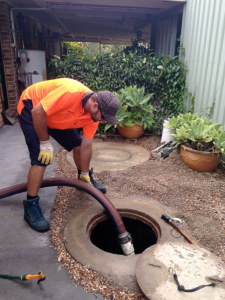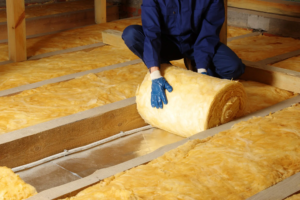GCs are ideal for intricate construction projects that require coordination across multiple trades, meticulous planning, and strict adherence to local building codes. They are also proficient in cost reduction, which leads to better project management overall.
Getting a general contractor license requires extensive on-site experience, proficiency in various aspects of building construction services, and verification of financial credibility. They typically hold degrees in construction management, civil engineering, or other related fields. Contact General Contractor Temecula now!

Project planning is when teams lay out the roadmap that will guide construction activities throughout the life of a project. This includes identifying goals, deadlines and resources needed to achieve them. Breaking down tasks into smaller, more manageable activities helps keep projects on track in terms of costs, quality and time.
A key player in the planning phase is the project manager. They are responsible for implementing the plan and monitoring all aspects of the build. They should have extensive experience and a deep understanding of how construction works.
Other team members include a construction estimator and a general contractor. The former analyzes plans, materials, labor and time requirements to create a cost estimate for the project. They help set the budget and ensure that the project stays within its financial parameters.
General contractors translate the project plan into physical reality. They oversee the day-to-day operations of the site, including hiring subcontractors and managing safety compliance. They also work with the project manager to ensure that all building codes and regulations are met.
Other tasks that are common in this phase of the project include procuring equipment, materials and supplies, obtaining required permits and fees and setting up jobsite facilities such as restrooms, first aid stations and storage areas. It is also important to ensure that any existing contracts are reviewed and finalized in order to avoid delay. Scope creep can also be avoided by documenting all changes and requiring formal approval from the project management team. This will prevent rushed work or oversight that leads to rework or defecting.
Contract Negotiation
Whether you’re building a new home, remodeling a kitchen or expanding your office, unless you are an experienced builder, trade specific in construction, or have extensive knowledge of the construction industry, you will probably require the services of a General Contractor to manage and coordinate the project. A GC can ensure that the job is completed on time, on budget and to city specs and codes.
GCs have to deal with a wide range of issues on construction projects including design changes, labor shortages, price fluctuations in materials and obtaining the right licenses and permits. The best GCs have processes in place to handle these challenges and are able to collaborate effectively with their team members on the ground.
Contract negotiations are a critical part of the overall process. Having the right tools and a clear plan for each negotiation session will set you up for success. This helps you avoid misunderstandings and disputes, allowing you to focus on the work that needs to be done.
Start by defining your non-negotiables: What aspects of the project are absolutely essential for you? This can include adhering to a budget, meeting a deadline or using certain materials. This will empower you to stand firm when negotiating and help you find common ground with the contractor.
Negotiating should be a collaborative process, so take the opportunity to discuss what you’re both looking for in the final contract. This will help both parties reach an agreement that satisfies their goals and creates value for the project. During this stage, it’s important to consider the bigger picture: ensuring that the contract aligns with your overall business strategy, mitigating risks and maximizing potential for competitive advantage.
When negotiating, be polite and confident. The tone of your voice can impact the person you’re addressing and can make them more likely to listen to what you have to say. It also shows that you’re willing to negotiate, which will encourage the other party to do the same. Also, always ask for clarification on any parts of the contract that you don’t understand.
Subcontractor Management
Subcontractors play a critical role in the execution of specialized scopes of work. Their performance directly impacts project quality, timelines and overall outcomes. Ensuring that the right specialty contractors are selected and properly managed is one of the key responsibilities of the general contractor. GCs often curate a list of pre-qualified specialty contractors during the bidding process and conduct extensive due diligence to evaluate them against criteria such as experience, safety ratings, references and financial stability.
The GC also oversees the performance of the subcontractors by establishing clear and comprehensive contracts that define all of the terms and conditions that both parties will be bound to for the duration of the project. This includes the project schedule, scope of work, deliverables, payment terms and mechanisms for resolving disputes. It is essential that these agreements are negotiated in good faith so that there is no misunderstanding down the road that could cause costly delays or legal issues.
Throughout the project, the GC, project manager and site supervisor work together to maintain seamless coordination and communication with the subcontractors. Regular meetings, progress reports and daily jobsite huddles allow for open dialogue that addresses any concerns or challenges related to the subcontractor’s work performance.
As with any construction project, unexpected occurrences can arise that impact the timing or cost of a task. In this scenario, the GC should immediately communicate any changes in instructions to all stakeholders and provide feedback to the subcontractors as needed. It is important that any communications made to subcontractors are documented in order to be able to prove any discrepancies down the road. In addition, if payments are withheld because of poor performance, it is essential that the proper notifications are given to ensure compliance with contract terms. This may include a valid change to scope, a delay in scheduling or a safety concern.
Site Management
Strategically selecting subcontractor partners for executing specialized scopes of work is a vital part of construction site management. The performance of subcontractors impacts project costs, timelines and overall outcomes. Therefore, general contractors carefully select and prequalify specialty contractors for inclusion in a project proposal. This is a process that involves evaluating specialty contractors’ safety ratings, experience, references and financial stability.
A general contractor will oversee project site activities to ensure that all processes and procedures are followed correctly. This is accomplished through proper documentation and establishing clear communication with all project stakeholders and team members. Additionally, a general contractor will be responsible for documenting any changes in the project scope and managing all change orders. These processes are essential to ensuring that a construction project is completed within budget and to the client’s expectations.








